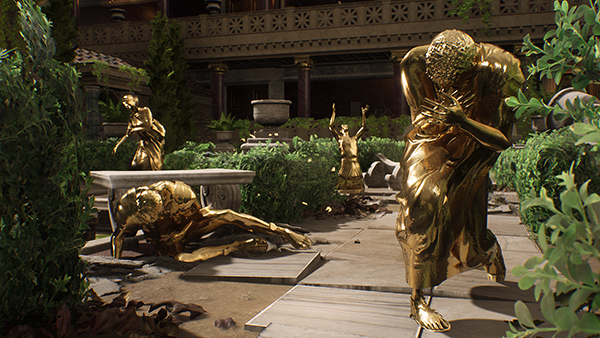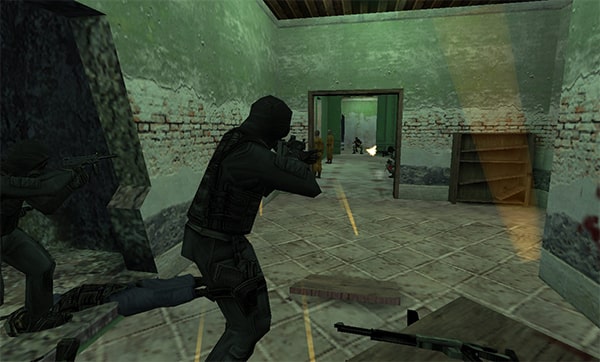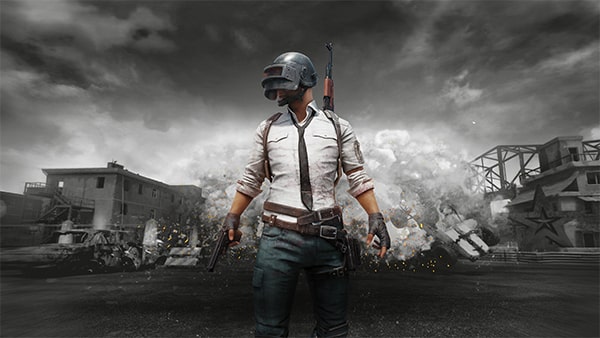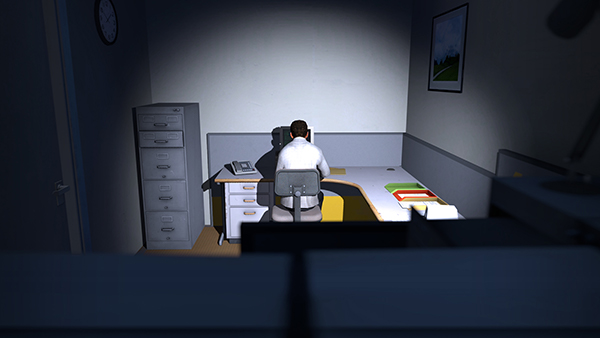Video game mods are a pillar of modern PC gaming. Communities come together to create mods that improve textures, FPS counts, and accessibility; other times they make wild and ridiculous changes like the Phil Spencer flashlight mod for Bethesda’s Starfield.
But some game mods aren’t just designed to enhance or alter the base game: sometimes, they build completely new experiences from their assets, and every now and again, one comes along that proves just as popular - if not more so - than its source material.
To illuminate the full potential of modding, let’s check out some of the greatest games that started life as mods, and the games that inspired them.
Why are so many mods based on Half-Life 2?
You’re gonna see the name ‘Half-Life 2’ a lot in this article. Dozens of retail games began life as a mod of the iconic shooter.
It’s Valve’s famous Source engine that makes Half-Life 2 so moddable. Its power and scalability made it an obvious choice for aspiring modders during a pivotal growth period for PC gaming.

Half-Life 2, developed by Valve
Garry’s Mod (Half-Life 2)
Let’s start with arguably the most famous mod of all time - it is in the title, after all.
Garry’s Mod is a haven for wacky and irreverent home-spun fun. There are no objectives, missions, or completion tasks to adhere to; you’re plopped in a sandbox and left to make your own entertainment like a sugar-high toddler in a soft play centre.
Like many popular PC game mods from the mid-2000s, Garry’s Mod is based on Half-Life 2. It was initially released as a simple mod in December 2004, before becoming its own retail release in 2006.
As of September 2021, the game had sold over 20 million copies worldwide.
Garry’s Mod, developed by Facepunch Studios
Antichamber (Unreal Tournament 3)
Antichamber is a mind-melting exploration game set within a surreal, Escher-esque labyrinth, where every puzzle feels like a devious attempt to brain your damage. (Wait…)
Developer Alexander Bruce got the idea for Antichamber while trying to recreate the classic action game, Snake. A rookie coding error threw the game’s geometry for a loop, dramatically distorting the world’s environment:
‘I realised that what made these geometry and space prototypes interesting was not how they functioned, but how a player would have to try and comprehend the rules behind them.’ - Alexander Bruce, interview with CultureLab
The game is a huge departure from the first-person arena shooter its original mod was based on. Unreal Tournament 3 was another popular base for the mid-2000s modding community, spawning a series of mods that ultimately became standalone releases, including The Haunted: Hell’s Reach and Renegade X.

Antichamber, developed by Alexander Bruce
Team Fortress Classic (Quake)
Team Fortress 2 is a mainstay of modern PC gaming. Ask any late-2000s PC gamer the name of the Medic’s pigeon - we’re obligated to reply in a German accent.
But you can’t have a Team Fortress 2 without a Team Fortress 1, or Team Fortress Classic as it’s better known. Originally released in 1999, the game began life as a mod for the classic boomer shooter, Quake.
While outdated by the standards of its sequel, Team Fortress Classic still holds up well, returning us to a time before the Spy showed us elicit pictures of the Scout’s mother.
Opening cutscene to Team Fortress Classic, developed by Valve
DOTA 2 (Warcraft III: Reign of Chaos)
It’s hard to imagine what the esports landscape would look like without DOTA 2. It’s one of the biggest franchises in the industry, regularly exceeding 7.6million monthly active players - and it owes it all to modding.
The original mod was based on Blizzard Entertainment’s Warcraft III: Reign of Chaos. A rotating cast of modders worked on the project, originally titled Defense of the Ancients (or DotA for short), before Valve approached Blizzard to acquire the rights and publish a sequel in 2011.
The rise of the original DotA mod even inspired Riot Games to try their hand at a multiplayer online battle arena (MOBA) game, which you may know these days as League of Legends.
All that from one little mod, eh?

DOTA 2, developed by Valve
Dear Esther (Half-Life 2)
It’s the game that fired so-called ‘walking simulators’ into the mainstream, and it began life as all great things do: as a Half-Life 2 mod.
Dear Esther drops you onto an apparently uninhabited Hebridean island, leaving you to comb the houses and walking trails for fragments of a torn letter. As the pieces come together, you learn of the tragic passing of the narrator’s wife, Esther, and his despairing search for meaning.
The game started as a university research project in 2008 before eventually achieving a retail release in 2012. Dear Esther received five nominations at the 2013 BAFTA awards, and is estimated to have earned developers Robert Briscoe and The Chinese Room well in excess of $1.2million.
Dear Esther: Landmark Edition, developed by The Chinese Room
The Forgotten City (The Elder Scrolls V: Skyrim)
For a game with as much mod support as Skyrim, it’s incredible to consider that so few have become successful standalone games. Still, if you’re interested in modding Skyrim, The Forgotten City is the example to follow.
Originally created as a quest mod of the same name, The Forgotten City quickly won favour with Elder Scrolls fans for the high standards of its writing. The story explores an ancient Roman civilization in which those who commit biblical sins are turned to gold.
Having already scooped the Mod the Year and Best Interactive Media awards in 2015 and 2016 respectively, The Forgotten City went on to claim the Excellence in Narrative and Best Debut Indie awards when the game released in 2021.

The Forgotten City, developed by Modern Storyteller
Counter-Strike (Half-Life)
Another successful game that started as a Half-Life mod? Say it ain’t so!
Interestingly, we’re talking about the OG Half-Life this time, which ran on the precursor to Valve’s Source engine, known as GoldSrc. The games industry was accustomed to frenetic, over-the-top shooters like Doom and Quake by the late 1990s, but Counter-Strike offered a far more realistic take.
The mod’s popularity was almost instantaneous, and it didn’t take long for it to catch Valve’s attention. They purchased the rights for Counter-Strike in 2000, releasing the first retail entry in the series later that year.
Today, Counter-Strike is one of the most recognisable shooters around and, much like DOTA 2, helped kickstart the growth of professional esports.

Counter-Strike, developed by Valve
Red Orchestra (Unreal Tournament 2003)
The Red Orchestra series is one of the most historically-accurate World War II shooters on the market. Set along the Eastern Front, both Red Orchestra: Ostfront and Heroes of Stalingrad depict the brutality and horror of the Red Army’s battles with the German Wehrmacht.
Developers Tripwire Interactive entered the original Red Orchestra mod into the 2005 ‘Make Something Unreal’ competition, winning a $50,000 prize fund and two Unreal Engine Licences. The studio have since gone on to create the Rising Storm series, as well as 2020’s shark vs. human action RPG, Maneater.
Tripwire have never been shy about paying it forward, either: the studio have acquired two Red Orchestra mods in the past, including Mare Nostrum and Killing Floor - the latter of which they continue to develop and publish to this day.
It’s mods all the way down with this one.
Red Orchestra: Ostfront 41-45, developed by Tripwire Interactive
PlayerUnknown's Battlegrounds (Arma 3)
It’s easy to forget that there was a time when PUGB was the biggest game in the world. Some publications even nominated it for 2017’s Game of the Year. Y’know. The same year that Breath of the Wild, Persona 5, and Horizon: Zero Dawn released.
The franchise doesn’t quite carry the same weight that it did back in 2017, but the impact it had was seismic. It nearly single-handedly kicked off the industry's infatuation with battle royale modes, after all.
It all stemmed from a mod of Bohemia Interactive’s military simulation game, Arma 3. The mod became one of the top five most popular mods of all time, ballooning Arma 3’s playerbase to well over four million players.

PlayerUnknown's Battlegrounds, developed by PUBG Corps
The Stanley Parable (Half-Life 2)
‘Death, taxes, and Half-Life 2 mods becoming successful retail releases’. That’s how the saying goes, right?
The Stanley Parable is something special, though: a game that plays you just as much as you play it. A game where you’re the main character, but not important in the slightest. Where your decisions matter, but have no impact at all.
It’s one of the most famous indie games of all time, selling over a million copies in its first year and earning an expanded rerelease in 2023. True to its modding roots, the game was even rebuilt as a Half-Life 1 mod using the GoldSrc engine in 2022.

The Stanley Parable, developed by Galactic Café
Modding with GameMaker
At GameMaker, we believe modding is a core part of the modern video game experience, and a huge part of its future. In 2023, we partnered with mod.io to bring a free mod.io plugin to the GameMaker engine.
With the mod.io plugin installed, you can create games that natively support mods. All your players have to do is select the mods they want to install, and they’ll be downloaded and integrated straight into their game.
For more information on the mod.io plugin, and the surprising benefits of endorsing mods for your games, check out our interview with mod.io founder Scott Reismanis.
If you’re looking for an easy-going introduction to the world of modding, download the GameMaker Space Rocks mods and learn how to change menus, sound effects, and power-ups in our arcade game template.


